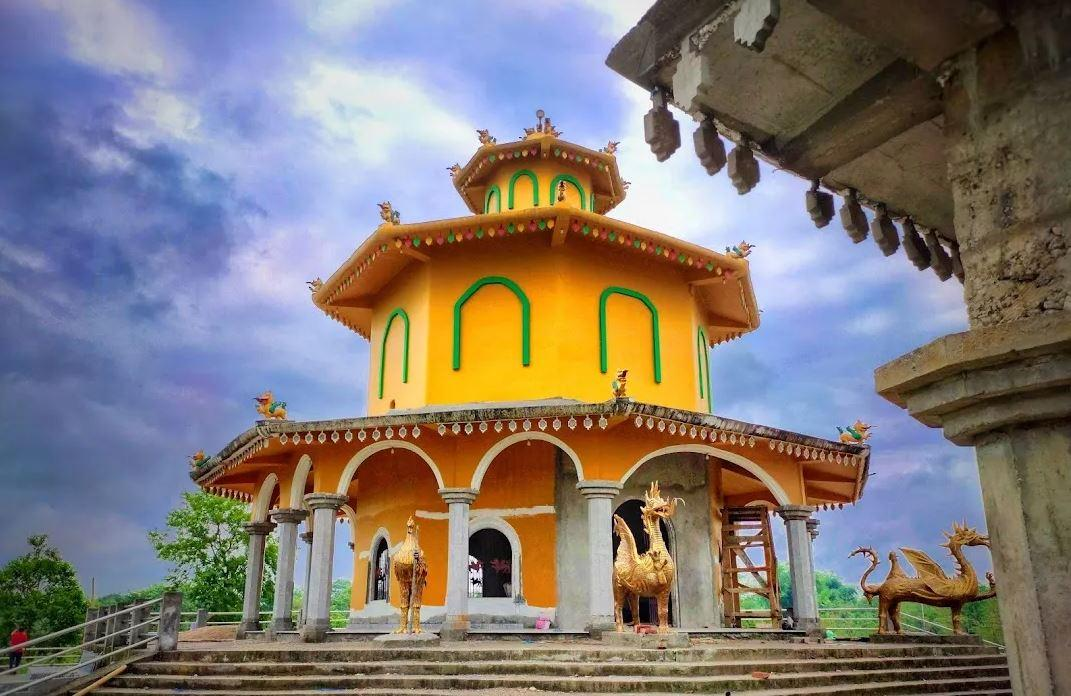Hello Friends!
Wellness is something that isn’t just a new concept but is deeply rooted in a lot of our Indian traditions, some of which we see being followed less and less as years go by. I am an Ahom and originally from Sivasagar, and my parents are settled in Guwahati. Being born in Pasighat, Arunachal Pradesh and finishing college in Shillong, Meghalaya, I got exposed to diverse cultures from my childhood. We are proud of our culture and as Uday and I are from different ethnic backgrounds, it has been very interesting for us to discover and follow each other’s traditions and I felt like it would be nice to share our experiences here as well!
When discussing the notable dynasties that ruled India, names like the Cholas, Mauryas, and Marathas often come up. However, it might surprise you to learn that amid these well-known dynasties, one stands out for its remarkable reign in the Northeastern regions, lasting over 600 years—the Ahom dynasty. Interestingly, historical evidence suggests that the formidable Ahoms from North East India not only maintained their rule for centuries but also defeated the seemingly invincible Mughals on multiple occasions. Quite fascinating, isn't it?
Founded by Prince Chaolung Sukapha, hailing from South China's Yunnan province, the Ahom dynasty began its journey in 1228 in the Brahmaputra valley. In their own language they called their kingdom Mung-Dun-Chun-Kham, but was better known as Asam, Assam in English, and Aham in the Persian chronicles. The determined prince swiftly established a vast state in North Eastern India, drawing inspiration from his South West Chinese roots. This led to the imposition of a monarchical system across his domain, as he reshaped existing political structures. Chaolung Sukapha not only dethroned numerous landlords but also annexed kingdoms and converted various tribes into loyal followers. What started with an initial following of 9000 individuals upon his entry into India soon multiplied, resulting in a population wholly aligned with his ideologies. This gave birth to the ethnic group Tai Ahom তাই আহোম (ไทอาหม) of Assam.
Monuments built by the Ahoms

Picture Credit: Wikipedia
The Ahoms, built a lot of notable monuments in Sivasagar:
- Rang Ghar: Asia's inaugural amphitheater, located at Rupahi Pathar in the Ahom capital of Rangpur, served as the royal sports-pavilion where Ahom kings and nobles enjoyed events such as buffalo fights and other sports, especially during the Rongali Bihu festival.

Picture Credit: Wikipedia
- Talatal Ghar: The largest monument built during the Ahom era which was initially built as an army base and had 2 tunnels and 3 underground floors.
- Shiva Dol: The Sivadol (dol means temple in Assamese) is believed to be the tallest(180 ft) Shiva temple in India and has a golden koloshi (Dom) - a water jug of 8 feet high on the top of the temple.
Royal Emblem of Ahoms

Picture Credit: Pinterest
The Tai-Ahom insignia "ngi ngau kham" royal symbol of Tai Ahom. This mythical animal appears as a hybrid of a snake, a lion, a tortoise, a horse and a bird. Tai Ahom people believe that Ngi Ngao Kham also has a close relationship with the Chinese dragon.
Me-Dam Me-Phi

Me-Dam Me-Phi is a traditional festival observed by the Ahom people every January 31st for more than 400 years, dating back to the 12th century. This celebration commemorates their ancestors and departed loved ones. The term 'Me' signifies offerings, 'Dam' refers to ancestors, and 'Phi' represents gods. In the past, Ahom Kings conducted prayers on this day to honor victorious outcomes in war and ward off potential dangers.
During Me-Dam Me-Phi, the Ahom community pays homage to three deities: Grihadam, Dam Changphi, and Me Dam Me Phi—the god of heaven. Ahom beliefs hold that a person, after death, transitions from being a 'Dam' (ancestor) to a 'Phi' (God) after a few days. They also believe in the immortal soul uniting with the supreme soul, possessing spiritual qualities, and continually blessing the family.
To honor the departed, Ahom families erect a pillar known as 'Damkhuta' on the opposite side of the kitchen (Barghar). Here, they offer various items like homemade wine, mah-prasad (beans and chickpeas), eggs with handoh (a rice powder), and rice with meat and fish in a gesture of worship and remembrance.


1 comment
Nice